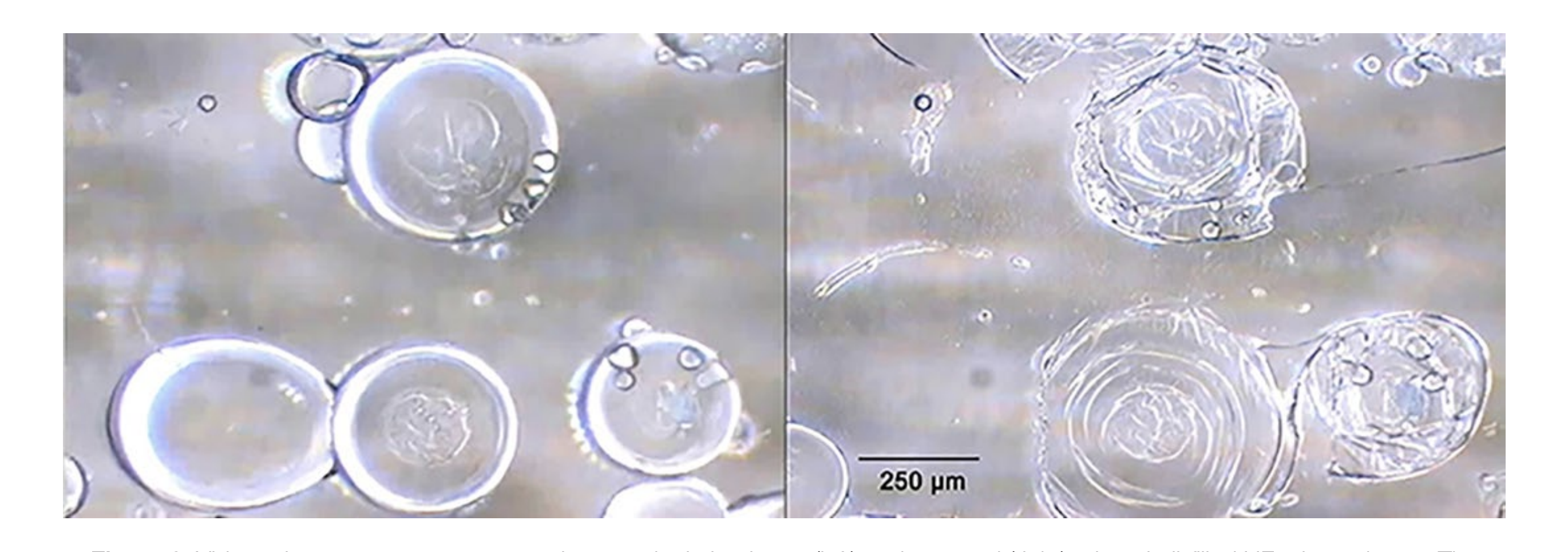Sandia National Laboratories (SNL), a contractor for the U.S. Department of Energy’s National Nuclear Security Administration (NNSA), has developed a 3D printable material for indicates penetration of a tamper-indicating enclosure (TIE). The material is composed of microspheres of transition metal ion solutions to be 3D printed on surfaces. When the microspheres are ruptured, the irreversible colour change alerts users about a breach. Researchers believe this will enhance the capabilities of TIEs and support treaty verification.
Tamper-indicating enclosures (TIEs)
Tamper-indicating enclosures (TIEs) are essentially volumetric seals. It is often used in treaty verification regimes to detect access to an item of interest. For example, detecting access in inspectorate-owned equipment enclosures ensures trust in the information stored and processed within.
Current approaches rely on time-consuming and subjective visual assessment by an inspector or external equipment. On the other hand, active approaches are limited due to strict conditions on the application environment. What is more, many TIE technologies are old, leaving them more vulnerable.
Recognizing these limitations, SNL aims to develop “bleeding” materials that allow inspectors to readily locate attempts of penetration into TIEs using simple visual observation. Adversaries would not have the ability to repair damage to the new TIE materials as well. Such materials have to be robust regarding the reliability, environment and facility handling. Its approach is to embed cargo loaded microspheres in 3D printed structures that once tampered, will cause a visually obvious irreversible colour change.
R&D of sensor compounds
First stage of the study is the research and development of sensor compounds. The team searched for the 3D transition metals with an organic sensor that exhibit the most dramatic irreversible colour change. After surveying 8 different metal salts, SNL found the most visibly obvious color changes occurred in the solutions of Fe2+ and Fe3+.
Then, sensor molecules are physically incorporated into a cross-linked polymer backbone. Cross-linked structures are chosen as backbones because they mitigate radiation and do not degrade quickly over time. As a result, sensor compounds are stable over time in air, over heat and in the presence of corrosive materials and radiation.

R&D of 3D printable microspheres
The second stage is the research and development of microspheres, small spherical particles in the nano- to micron-size regime. Starting from an emulsion, these tiny capsules are formed in a liquid medium. In the experiment, microspheres of diameters from 10 – 250 μm were synthesized.
Transition metal ions from the previous stage were loaded into the capsules as cargo compounds. To mechanically contain the cargo compound, there are specific structural requirements for the microsphere wall materials. While microspheres have to be sufficiently robust to be 3D printed and withstand normal environmental conditions, they also need to rupture under tampering. Intrinsic tensile properties of the wall materials, as well as the wall thickness and microsphere radius are the determinant structural factors put into test.
Among the polymeric microspheres investigated, copolymer Urea Formamide (UF) is found to be the best in terms of materials performance. Siliceous systems were subsequently studied to impart increased mechanical strength into the microsphere walls. However, silica microspheres contain micro- and mesoporosity, which is undesirable for long term containment of cargo molecules.
Combining the best of both worlds, the team settled on developing a core-shell polymer-silica composite microsphere material. The composite microspheres have the low permeability of polymers with the high mechanical strength of silica.

Summary and next steps
Without additional equipment and extensive time-consuming visual examination, the resulting TIEs are passive, flexible, scalable and cost-effective. Monitoring of tamper attempts is made more efficient and effective using metal-loaded microspheres.
The material developed will be 3D printed for customizable inspection equipment or spray-coated for application to facility-owned equipment. Other applications include walls or structures, circuit boards, and 3D printed seal bodies.
In the future, the team will test and evaluate durability and vulnerability of 3D printed and spray-coated prototypes. The prototypes will also undergo environmental and industrial testing upon fabrication.
The potential of 3D printing in security measures has been widely explored. Last year, new microscopic security features has been developed with two-photon lithography. Another way to enhance security of 3D printed parts is by embedding other components within the prints. Quantum dots, that glow when hit with a UV light, prevents counterfeiting of 3D prints. Chemical “ghost signatures” are another, and can be found embedded in the layers of 3D printed parts.
“Tamper-Indicating Enclosures with Visually Obvious Tamper Response“ is published on ESARDA BULLETIN, No. 58. It is co-authored by Heidi A. Smartt, Annabelle I. Benin, Cody Corbin, Joyce Custer, Patrick L. Feng, Matthew Humphries, Amanda Jones, Nicholas R. Myllenbeck.
For more industry-leading research subscribe to the most widely read newsletter in the industry here, like 3D Printing Industry on Facebook and follow us on Twitter.


